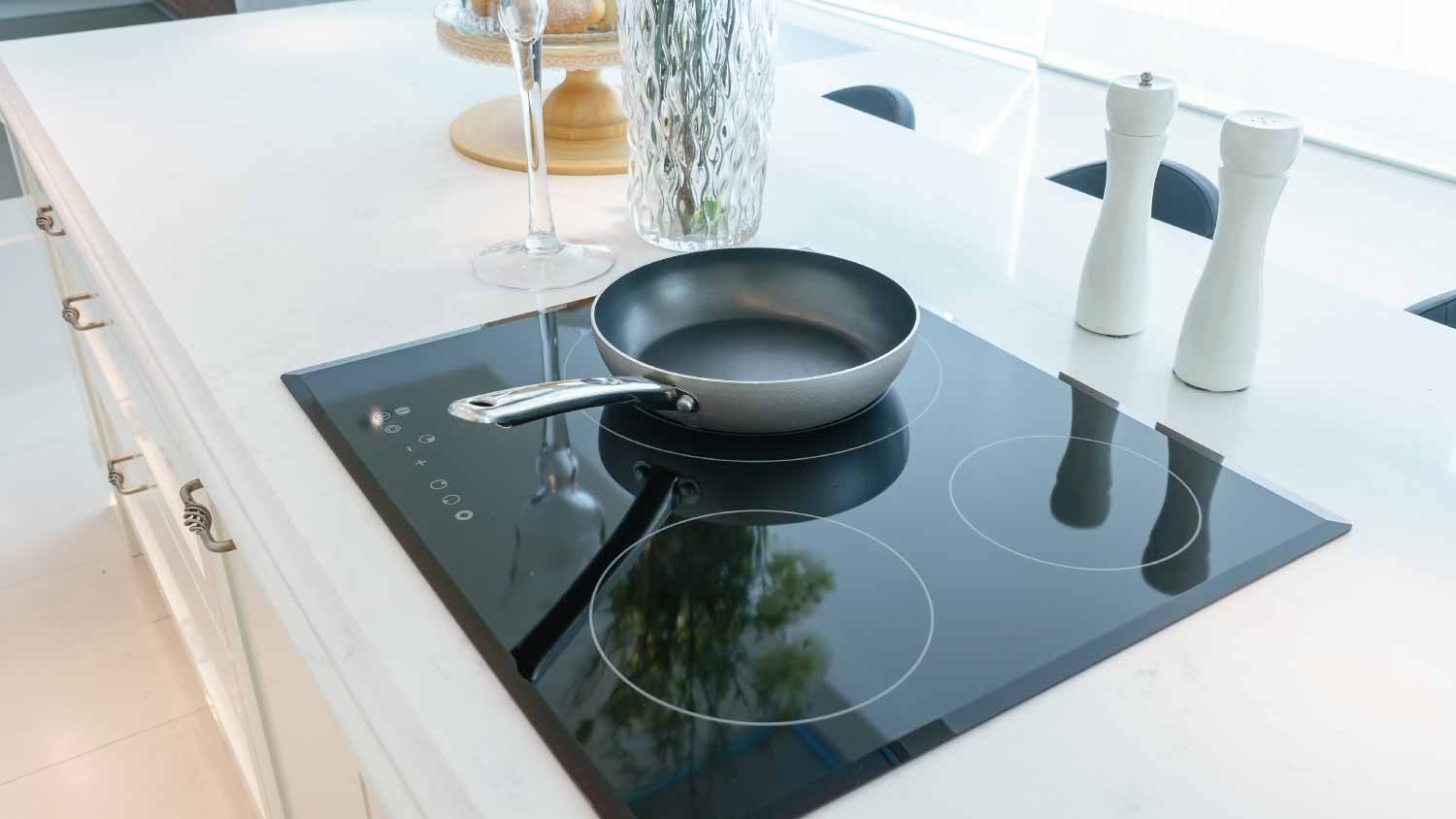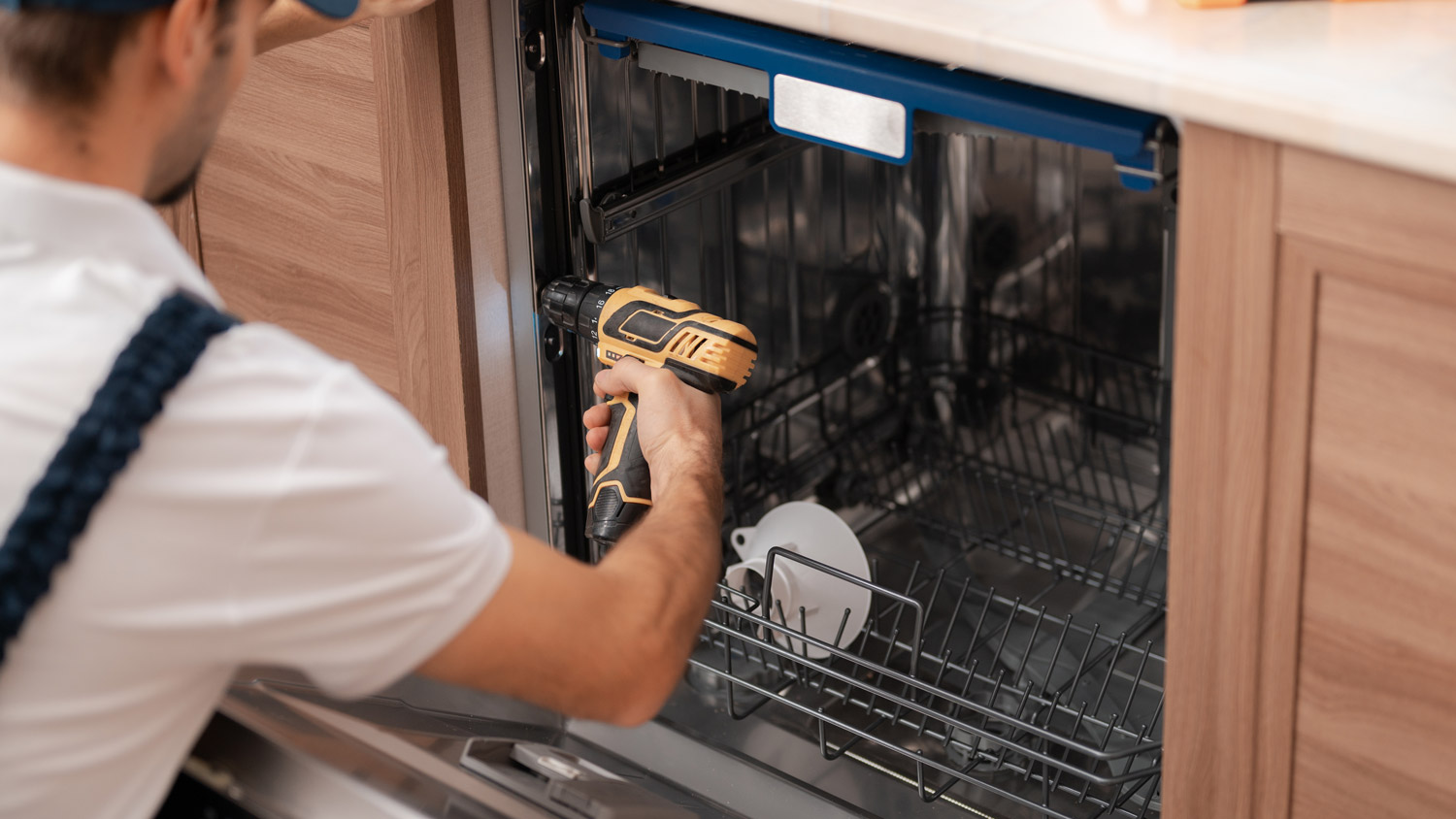
Discover the average washing machine repair cost, key price factors, and expert tips to help you budget and save on repairs for your home.
How would you like to boil your water in about half the time?


An induction stove generates an electromagnetic field and turns the cookware into its own heating source.
Induction stoves can cost anywhere from $600 to $9,200.
Induction stoves are more energy-efficient than conventional electric stoves.
Induction stoves only work with compatible cookware, such as cast iron, magnetic stainless steel, and cookware made with other magnetic metals.
If you’re one for efficient and intricate cooking, an induction stove might be the next upgrade your kitchen deserves. Generally, induction cooktops can outperform most traditional gas stoves and electric stoves. It is also safer and more energy-efficient. Sometimes, you may even qualify for financial incentives for a new induction stove.

Physically speaking, an induction stove may look very similar to a standard glass-top electric stove. Most standard 30-inch induction stoves come with four cooktops controlled by an electric panel.
While induction cooktops fall under the electric stove category, they use electromagnetism to turn cookware into its own heat source instead of heating up the stovetop like a conventional electric stove does.
When you turn an induction stove on, electric current flows through the copper coil under the ceramic glass, which generates a magnetic field around the stove. The field then creates a current inside the cookware, turning it into a heat source.
Induction ranges can also replace standard electric ovens. They use the same mechanism and create an electric current within a compatible baking tray.
If you’re unsure whether you have an electric stove or an induction stove, here is a simple method to find out: Turn on one of your stovetops. If you notice the surface turning red and can feel the heat coming off it, you have a conventional eclectic stove. Induction stoves do not heat up the cooktop surface.
Induction cooking is extremely energy-efficient, which means you are saving money on your utility bills in the long run. It also reduces the time needed to heat things up, making your cooking experience far more effective and effortless.
Since induction stoves don’t generate heat on their surface, they are safer, especially for families with children and elders. They are also easier to clean because food scraps won’t get burnt and stuck to the surface.
Induction stoves can be an investment with a higher upfront cost. Generally speaking, an induction stove can cost anywhere from $600 to $9,200. On average, induction stoves start at around $1,000.
Induction stoves only work with compatible cookware made with magnetic metals, such as cast iron. Non-stick aluminum cookware won’t work with induction cooking, so you would have to replace all your pots and pans.
Induction stoves also have a sharper learning curve, especially because the temperature can change rapidly. When cooking on a higher setting, you might also notice more noises, including humming and buzzing. However, you can reduce noise by switching to heavier pans with a flat bottom.
Electric stoves tend to be more affordable upfront than induction stoves. However, the major difference in energy efficiency can significantly impact the actual cost in the long run. Induction stoves are about 5 to 10% more efficient than electric stoves.
Induction stoves are also far more responsive and accurate in temperature control. Compared to regular electric stoves, they only take about half the time to bring water to boiling.
Also, electric stoves are harder to clean because the heat on the surface can burn food residues. This also leads to additional costs for replacing the glass top if regular methods cannot restore the surface.
Installing a gas stove seems like a no-brainer choice if your home’s kitchen already has a gas supply. Plus, cooking over an open flame does evoke certain sentiments.
While gas stoves are typically more affordable than induction stoves, they have too many safety risks. You may burn yourself, and a gas leak would threaten your life. The open flame can also leave marks on your kitchen walls and cabinetries.
On the contrary, an induction stove is clean, safe, and provides as much precision control as an open frame. Surely, there will be some learning curve going from gas to induction. But once you become acquainted with how induction cooktops work, it will be as easy to cook as you did previously over the flame.
Installing an induction stove costs approximately $225 to $350 in labor. Therefore, upgrading to an induction stove costs about $1,225 to $2,750 on average, with the cost of equipment included. While induction stove installation is fairly straightforward, we still recommend hiring a licensed and experienced appliance installation pro. A professional may also help you get a better deal on a new induction stove since they can access manufacturer and wholesale prices.
From average costs to expert advice, get all the answers you need to get your job done.

Discover the average washing machine repair cost, key price factors, and expert tips to help you budget and save on repairs for your home.

Discover the average dishwasher installation cost, key price factors, and tips to save on your project. Get transparent, expert-backed estimates.

Discover the cost to install washer and dryer hookups. Learn about price factors, labor, materials, and tips to save on your laundry room project.

You can usually unclog your dishwasher by cleaning the filter and using a DIY solution to clear the drain hose. Learn more with this step-by-step guide.

Cooking in your kitchen wouldn’t be possible without a range hood to capture all of that greasy smoke and billowing steam. This guide breaks down the types of range hoods and their benefits and drawbacks so you can make an informed decision.

If a constantly squeaking noise has you wondering why is my dryer squeaking, keep reading to learn what may be causing the issue and how to fix it.